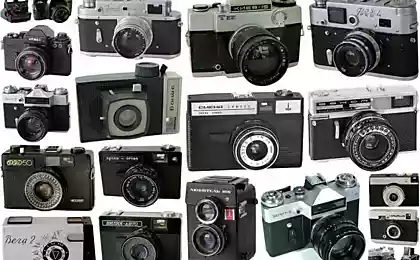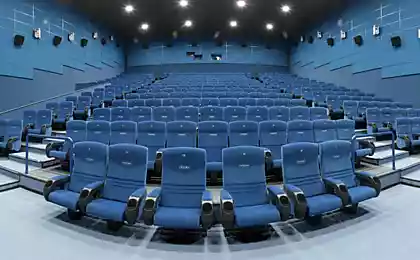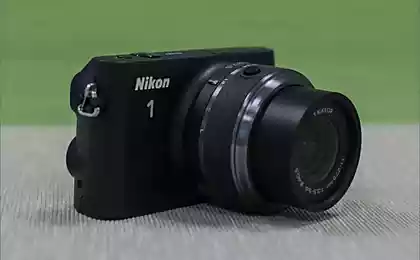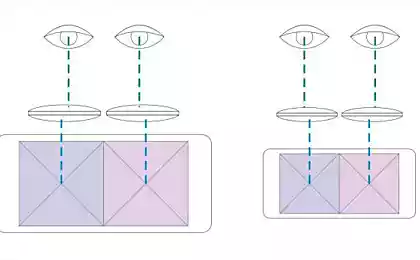891
24 frames per second or higher. For what
It will be quite a lot of letters and photos. On completion unsubscribe post!
Announcement: How to tell you any Nikita Mikhalkov, no art is more important than the film - and the most important of the arts deserve a decent play even at home. Let's talk a bit about the frame rate, scan, and the reasons for which is not good to watch movies on TV from a connected computer
I'm sure many of you are faced with the popular opinion: that the all video formats provide 24 frames per second, which corresponds to the properties of the human eye perception. In fact, the generic thesis is the result of a number of myths and misconceptions. It is around this characteristic of the transmitted image in the last two or three years there is a small revolution standards affecting many areas - from the home TV market to filmmaking.
Our eyes
First of all, the ability of our organs of vision is not limited to the notorious 24 frames / sec. The exact number of "analogue" the eyes of people in general is difficult to express, but the approximate limit, depending on the properties of individuals, ranging from 60 to 200 frames / sec. Of course, we perceive the visual information with a certain "inert", but is trained to notice the extremely fast parts is still possible - for example, in the case of aircraft pilots traditionally do well. Also, there is a difference between normal vision and peripheral - at the sight of "the edge of the eyes" to monitor cathode-ray tube for a noticeable flicker is not perceptible in direct contact with the screen.
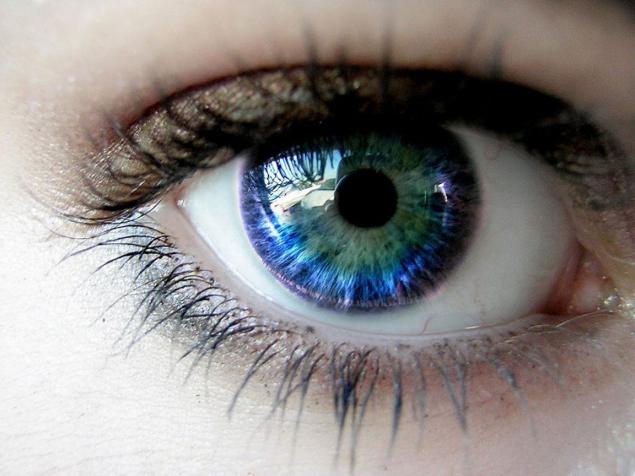
Another example, clear to many - video games. Try to play some new first-person shooter computer with mediocre configuration - see in all its glory "brake". Using special software (Fraps) can be measured by the current frame rate on the display. Comfortable minimum FPS, in which the management is different smoothness required, and the user is no longer completely ignore the image freezes, located at 45-50 frames per second. But if the video is transmitted at a speed below 25-30 FPS, then play, as a rule, it becomes almost impossible. And the difference between the 24 frames / s and the ideal value of 60 frames / s noticeable for any sighted person.
Maybe someone now remember about the famous 25-th frame, long horror story and ostensibly universal tool, which is used by unscrupulous companies to increase sales. In 1957, the idea of a hidden frame, which directly affects the subconscious mind, pushed the American James Vicary. But after five years, he is the author of dubious project admitted that all this is nothing more than fiction and the value of sales is not affected. Actually, this is the 25th frame at closer look at the screen would be visible to the eye, you might even have time to read short words and memorize pictures and patterns. And about any particular impact on the subconscious, of course, and not talking.
However, after the collapse of the Soviet Union's domestic press with an incomprehensible obstinacy undertook to promote the myth of the 25th frame and rasstaralas so great that even now many of our citizens truly believe in this method of mind control. And even the state authorities in Russia and Ukraine had adopted special laws that restrict the use of hidden advertising techniques (eg, Art. 10 № 108-FZ "On Advertising»).
In cinemas
It all started with the silent cinema, which used a film with 16 frames per second. When showing excerpts from pre-war movies, you probably noticed abnormally high rate of what is happening on the screen - is a consequence of the corresponding frame rate. Then, with the advent of sound in film for a normal sync with the audio track of video (in order to avoid the effect of "squeaky" votes cast) the number of staff was increased to 24 compromise that remains relevant to this day.
However, to be precise, in the cinemas show films not with 24 and 48 frames per second. This is due to the work of one of the parts of the projector, the shutter - a mechanical device to periodically overlap the luminous flux at the time of film movement in the picture window. That is, roughly speaking, every second frame - just "empty" and almost imperceptible flicker. But even with the same information content of 24 and 48 frames / s last format is much more comfortable for the human perception. Due to the "inertia" of perception of visual information our eyes, shutter eliminates the "jerks" in the transition from one frame to another.
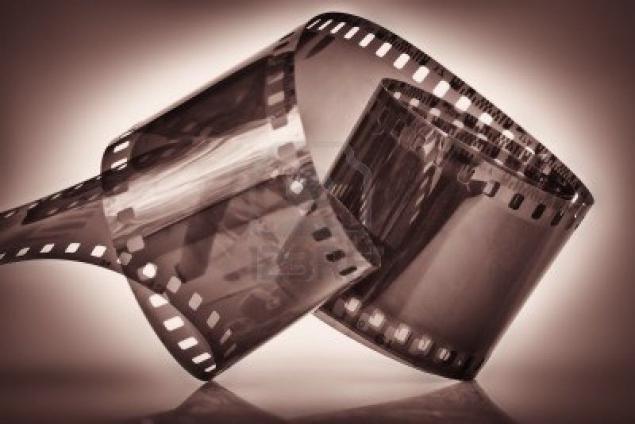
Nevertheless, in the cinema for decades, there is talk about the need to go to the usual standard of 24 frames per second. But it is hampered by a number of problems, mainly related to technological difficulties. However, in recent years when the films became increasingly removed, and show in the halls with the help of digital equipment, the problem in this regard was greatly simplified.
But there is another aspect to the cinematic visuals. For example, at 60 frames / second, our eyes get more information by changing the perception of what is happening on the screen. It becomes apparent artificiality of the scenery and visual effects, it seems that you attend a theatrical production or in the studio, where the film. This negatively affects the authenticity of the films, often nullifying some of the director's and camera techniques. But all this does not negate all the positive properties of what has video with a high frame rate. This stunning image smoothness and naturalness pictures - just like in real life, which creates a great sense of presence and faith in what is happening. Finally, a larger number of frames eliminates flicker (especially noticeable at the edges of the screen), reducing eye fatigue.
James Cameron, the chief kinonovator on our planet, make the world fall in love 3D, seriously promised to make another revolution in the industry. His next project "Avatar 2" and "Avatar 3" will be filmed in the format of 60 frames per second, and will demonstrate to mankind all the advantages of this technology. However, Peter Jackson and his "Hobbit" was going ahead of the director of "Titanic" - at the end of this year we will be able to see the picture on the novel by JRR Tolkien with high-grade 48 frames per second.

You have the house
On TV, everything is a little different. In the world of distributed three broadcasting formats: NTSC, PAL and SECAM. Each has its own frequency properties of the transmission of video and occurs in strictly defined areas. NTSC is the American standard, which provides 30 frames / sec. Technologically close PAL and SECAM is used in other parts of the world and provide 25 frames / sec.
As with the obturator in the movie, the number of frames in television broadcasting should be multiplied by two. This involves the use of the surplus interlace (interlace), where one frame is divided into two fields, each of which consists of either the even or odd lines of. As a result, ethereal image seems quite smooth, it is not surprising that at 60 or 50 frames / s for NTSC and PAL / SECAM, respectively.
If you watch the same movie on the big screen TV with DVD-ROM and on television, it is easy to notice a fundamental difference in the image. When broadcasting the picture will be more natural and even something like a theatrical production. Reverse experiment: try to buy a DVD-disk with a football or hockey game. Athletes will move once more sharply, and broadcast an unusual surprise "effect are adjusted," especially when the camera is moved horizontally along the stadium. The digital formats like DVD or Blu-Ray used the traditional 24 frames per second without obturators or interlaced frames, so on a TV with a big diagonal panning scenes easy to notice annoying twitching image, particularly at the edges of the screen - due to the nature of peripheral vision. < br />
Unfortunately, the digital media with 48, 60 or 100 frames per second in our homes is not in a hurry. Even Blu-Ray-coming edition of "The Hobbit" is already stated in the usual standard of 24 frames / s, which, in general, it is logical - video players simply are not able to play different formats. But to enjoy the beauty of high frame rate possible with the help of modern TV-compatible image smoothness.

A pioneer in this field, Philips began with its patented Digital Natural Motion, which allows you to display 100 frames per second. Then tightened other manufacturers, each gave the same concept its own name: Motion Plus from Samsung, Motionflow at Sony, Trumotion from LG and Motion Picture Pro from Panasonic. How it works in general is quite simple: between the original frames informative TV video processor inserts the intermediate frames, which provide high clarity and smoothness of the transition. According to the manufacturer now, some devices have a frequency of up to 400 and even 800 Hz, that is calculated several hundred artificial frames per second. Such high values, in fact, are only useful in the transmission quality 3D, as for a conventional video sequence has 120 frames / s is more than enough. However, with prolonged use at home, you will notice a number of disadvantages associated with the work of "uplavnyalovok" on your TV.
First, a fairly common problem with a computer. For example, LED-Samsung panel preferred that the frequency of the input signal exactly match the number of frames per second to play video files. That is, the video card usually produces 60 Hz, and you downloaded BD-RIP laid the traditional 24 frames / sec. When displaying pictures on television every few seconds will appear twitching and artifacts - Motion Plus system will attempt to calculate the extra frames based on the 60 available, while in the movie they just 24.
You can convert graphics card is forced on a 24 Hz, but then you'll have to contend with the slow work of the operating system interface, and twitching for unknown reasons (in case of LED-panels from Samsung) and will not disappear until the end. So you get the best result using player Blu-Ray / DVD-ROM drive (Sony PlayStation 3 - a great option) or HD-media player - no similar devices should be no problems.
Secondly, even the new technologies of calculation of additional frames in the most clever LED-panels sometimes "wrong". In some scenes you will notice the artifacts and trains. Especially often it happens in episodes, where the object is on a major plan to quickly move across the screen.

And third, it does not win any content by adding smoothness. Of course, it is useful for films and cartoons in 3D - breadth of the time seems to be more intense. A good system of calculating new frames for paintings, dominated by the panoramic shooting and the high level of detail, like the same "Avatar," "TRON: Legacy" or "Pan's Labyrinth." And all this is perfect for documentaries, TV series and sports broadcasts. On the contrary, the effect of smoothness is almost impossible to watch certain categories movies with deliberately "shaky" camera, such as "The Bourne Ultimatum," "Cloverfield" and a number of militants - with additional staff happening on the screen looks like porridge with artifacts.
Finally, in the fourth, as we have said above, sometimes to add realism and theatricality through the effect of the smoothness of the image makes certain movies ludicrous performances. Immediately visible badly painted backdrops, sticky during postproduction mediocre special effects, and other pleasures. Want to see for yourself - including the latest "Resident Evil" at an advanced LED-panel, "Spider-Man" Sam Raimi or any "Hulk." Well, about the old movies and say nothing - when watching the classic "Star Wars" you personally ensure that all spacecraft - is in fact plastic models, taken in a room with black wallpaper.

By the way, if someone suddenly had the idea that the system for calculating the additional staff to help get rid of the brakes in games - it is certainly not the case. Management becomes more "cotton" - the image will react with some delay to the player. In general, the play enabled "uplavnyalovkoy" impossible.
Therefore, the addition of smooth systems there are many ideological opponents, complaining about the loss of the movies in some movies. And these people can be understood. Hence a simple conclusion: to use "uplavnyalovki" need to be very selective, depending on the playable content. Overall, however, the existence of such technology is fully justified - in cases when it is really applicable, the picture on the TV screen just did bring you pleasure.
Total
All written words and above mentioned examples - is nothing compared to your personal impressions. If you are a frequent guest in the theaters, in the foreseeable future will be convinced of the benefits of 48 or 60 frames / sec - it's Peter Jackson and James Cameron will find ways in all its glory to demonstrate the advantages of technology.
If you are considering buying a new TV (or suddenly your home panel already provided similar capabilities), you should pay attention to the presence of systems adding smoothness. You can ask the seller to include the hypermarket in demonstration mode you are interested in the model, preferably a dynamic trailer of a movie or just 3D-image. As a result of the findings do show already own.
Evgeny Kuzmin
www.3dnews.ru/offsyanka/632430/
ALL!
Source:
Announcement: How to tell you any Nikita Mikhalkov, no art is more important than the film - and the most important of the arts deserve a decent play even at home. Let's talk a bit about the frame rate, scan, and the reasons for which is not good to watch movies on TV from a connected computer
I'm sure many of you are faced with the popular opinion: that the all video formats provide 24 frames per second, which corresponds to the properties of the human eye perception. In fact, the generic thesis is the result of a number of myths and misconceptions. It is around this characteristic of the transmitted image in the last two or three years there is a small revolution standards affecting many areas - from the home TV market to filmmaking.
Our eyes
First of all, the ability of our organs of vision is not limited to the notorious 24 frames / sec. The exact number of "analogue" the eyes of people in general is difficult to express, but the approximate limit, depending on the properties of individuals, ranging from 60 to 200 frames / sec. Of course, we perceive the visual information with a certain "inert", but is trained to notice the extremely fast parts is still possible - for example, in the case of aircraft pilots traditionally do well. Also, there is a difference between normal vision and peripheral - at the sight of "the edge of the eyes" to monitor cathode-ray tube for a noticeable flicker is not perceptible in direct contact with the screen.

Another example, clear to many - video games. Try to play some new first-person shooter computer with mediocre configuration - see in all its glory "brake". Using special software (Fraps) can be measured by the current frame rate on the display. Comfortable minimum FPS, in which the management is different smoothness required, and the user is no longer completely ignore the image freezes, located at 45-50 frames per second. But if the video is transmitted at a speed below 25-30 FPS, then play, as a rule, it becomes almost impossible. And the difference between the 24 frames / s and the ideal value of 60 frames / s noticeable for any sighted person.
Maybe someone now remember about the famous 25-th frame, long horror story and ostensibly universal tool, which is used by unscrupulous companies to increase sales. In 1957, the idea of a hidden frame, which directly affects the subconscious mind, pushed the American James Vicary. But after five years, he is the author of dubious project admitted that all this is nothing more than fiction and the value of sales is not affected. Actually, this is the 25th frame at closer look at the screen would be visible to the eye, you might even have time to read short words and memorize pictures and patterns. And about any particular impact on the subconscious, of course, and not talking.
However, after the collapse of the Soviet Union's domestic press with an incomprehensible obstinacy undertook to promote the myth of the 25th frame and rasstaralas so great that even now many of our citizens truly believe in this method of mind control. And even the state authorities in Russia and Ukraine had adopted special laws that restrict the use of hidden advertising techniques (eg, Art. 10 № 108-FZ "On Advertising»).
In cinemas
It all started with the silent cinema, which used a film with 16 frames per second. When showing excerpts from pre-war movies, you probably noticed abnormally high rate of what is happening on the screen - is a consequence of the corresponding frame rate. Then, with the advent of sound in film for a normal sync with the audio track of video (in order to avoid the effect of "squeaky" votes cast) the number of staff was increased to 24 compromise that remains relevant to this day.
However, to be precise, in the cinemas show films not with 24 and 48 frames per second. This is due to the work of one of the parts of the projector, the shutter - a mechanical device to periodically overlap the luminous flux at the time of film movement in the picture window. That is, roughly speaking, every second frame - just "empty" and almost imperceptible flicker. But even with the same information content of 24 and 48 frames / s last format is much more comfortable for the human perception. Due to the "inertia" of perception of visual information our eyes, shutter eliminates the "jerks" in the transition from one frame to another.

Nevertheless, in the cinema for decades, there is talk about the need to go to the usual standard of 24 frames per second. But it is hampered by a number of problems, mainly related to technological difficulties. However, in recent years when the films became increasingly removed, and show in the halls with the help of digital equipment, the problem in this regard was greatly simplified.
But there is another aspect to the cinematic visuals. For example, at 60 frames / second, our eyes get more information by changing the perception of what is happening on the screen. It becomes apparent artificiality of the scenery and visual effects, it seems that you attend a theatrical production or in the studio, where the film. This negatively affects the authenticity of the films, often nullifying some of the director's and camera techniques. But all this does not negate all the positive properties of what has video with a high frame rate. This stunning image smoothness and naturalness pictures - just like in real life, which creates a great sense of presence and faith in what is happening. Finally, a larger number of frames eliminates flicker (especially noticeable at the edges of the screen), reducing eye fatigue.
James Cameron, the chief kinonovator on our planet, make the world fall in love 3D, seriously promised to make another revolution in the industry. His next project "Avatar 2" and "Avatar 3" will be filmed in the format of 60 frames per second, and will demonstrate to mankind all the advantages of this technology. However, Peter Jackson and his "Hobbit" was going ahead of the director of "Titanic" - at the end of this year we will be able to see the picture on the novel by JRR Tolkien with high-grade 48 frames per second.

You have the house
On TV, everything is a little different. In the world of distributed three broadcasting formats: NTSC, PAL and SECAM. Each has its own frequency properties of the transmission of video and occurs in strictly defined areas. NTSC is the American standard, which provides 30 frames / sec. Technologically close PAL and SECAM is used in other parts of the world and provide 25 frames / sec.
As with the obturator in the movie, the number of frames in television broadcasting should be multiplied by two. This involves the use of the surplus interlace (interlace), where one frame is divided into two fields, each of which consists of either the even or odd lines of. As a result, ethereal image seems quite smooth, it is not surprising that at 60 or 50 frames / s for NTSC and PAL / SECAM, respectively.
If you watch the same movie on the big screen TV with DVD-ROM and on television, it is easy to notice a fundamental difference in the image. When broadcasting the picture will be more natural and even something like a theatrical production. Reverse experiment: try to buy a DVD-disk with a football or hockey game. Athletes will move once more sharply, and broadcast an unusual surprise "effect are adjusted," especially when the camera is moved horizontally along the stadium. The digital formats like DVD or Blu-Ray used the traditional 24 frames per second without obturators or interlaced frames, so on a TV with a big diagonal panning scenes easy to notice annoying twitching image, particularly at the edges of the screen - due to the nature of peripheral vision. < br />
Unfortunately, the digital media with 48, 60 or 100 frames per second in our homes is not in a hurry. Even Blu-Ray-coming edition of "The Hobbit" is already stated in the usual standard of 24 frames / s, which, in general, it is logical - video players simply are not able to play different formats. But to enjoy the beauty of high frame rate possible with the help of modern TV-compatible image smoothness.

A pioneer in this field, Philips began with its patented Digital Natural Motion, which allows you to display 100 frames per second. Then tightened other manufacturers, each gave the same concept its own name: Motion Plus from Samsung, Motionflow at Sony, Trumotion from LG and Motion Picture Pro from Panasonic. How it works in general is quite simple: between the original frames informative TV video processor inserts the intermediate frames, which provide high clarity and smoothness of the transition. According to the manufacturer now, some devices have a frequency of up to 400 and even 800 Hz, that is calculated several hundred artificial frames per second. Such high values, in fact, are only useful in the transmission quality 3D, as for a conventional video sequence has 120 frames / s is more than enough. However, with prolonged use at home, you will notice a number of disadvantages associated with the work of "uplavnyalovok" on your TV.
First, a fairly common problem with a computer. For example, LED-Samsung panel preferred that the frequency of the input signal exactly match the number of frames per second to play video files. That is, the video card usually produces 60 Hz, and you downloaded BD-RIP laid the traditional 24 frames / sec. When displaying pictures on television every few seconds will appear twitching and artifacts - Motion Plus system will attempt to calculate the extra frames based on the 60 available, while in the movie they just 24.
You can convert graphics card is forced on a 24 Hz, but then you'll have to contend with the slow work of the operating system interface, and twitching for unknown reasons (in case of LED-panels from Samsung) and will not disappear until the end. So you get the best result using player Blu-Ray / DVD-ROM drive (Sony PlayStation 3 - a great option) or HD-media player - no similar devices should be no problems.
Secondly, even the new technologies of calculation of additional frames in the most clever LED-panels sometimes "wrong". In some scenes you will notice the artifacts and trains. Especially often it happens in episodes, where the object is on a major plan to quickly move across the screen.

And third, it does not win any content by adding smoothness. Of course, it is useful for films and cartoons in 3D - breadth of the time seems to be more intense. A good system of calculating new frames for paintings, dominated by the panoramic shooting and the high level of detail, like the same "Avatar," "TRON: Legacy" or "Pan's Labyrinth." And all this is perfect for documentaries, TV series and sports broadcasts. On the contrary, the effect of smoothness is almost impossible to watch certain categories movies with deliberately "shaky" camera, such as "The Bourne Ultimatum," "Cloverfield" and a number of militants - with additional staff happening on the screen looks like porridge with artifacts.
Finally, in the fourth, as we have said above, sometimes to add realism and theatricality through the effect of the smoothness of the image makes certain movies ludicrous performances. Immediately visible badly painted backdrops, sticky during postproduction mediocre special effects, and other pleasures. Want to see for yourself - including the latest "Resident Evil" at an advanced LED-panel, "Spider-Man" Sam Raimi or any "Hulk." Well, about the old movies and say nothing - when watching the classic "Star Wars" you personally ensure that all spacecraft - is in fact plastic models, taken in a room with black wallpaper.

By the way, if someone suddenly had the idea that the system for calculating the additional staff to help get rid of the brakes in games - it is certainly not the case. Management becomes more "cotton" - the image will react with some delay to the player. In general, the play enabled "uplavnyalovkoy" impossible.
Therefore, the addition of smooth systems there are many ideological opponents, complaining about the loss of the movies in some movies. And these people can be understood. Hence a simple conclusion: to use "uplavnyalovki" need to be very selective, depending on the playable content. Overall, however, the existence of such technology is fully justified - in cases when it is really applicable, the picture on the TV screen just did bring you pleasure.
Total
All written words and above mentioned examples - is nothing compared to your personal impressions. If you are a frequent guest in the theaters, in the foreseeable future will be convinced of the benefits of 48 or 60 frames / sec - it's Peter Jackson and James Cameron will find ways in all its glory to demonstrate the advantages of technology.
If you are considering buying a new TV (or suddenly your home panel already provided similar capabilities), you should pay attention to the presence of systems adding smoothness. You can ask the seller to include the hypermarket in demonstration mode you are interested in the model, preferably a dynamic trailer of a movie or just 3D-image. As a result of the findings do show already own.
Evgeny Kuzmin
www.3dnews.ru/offsyanka/632430/
ALL!
Source:



